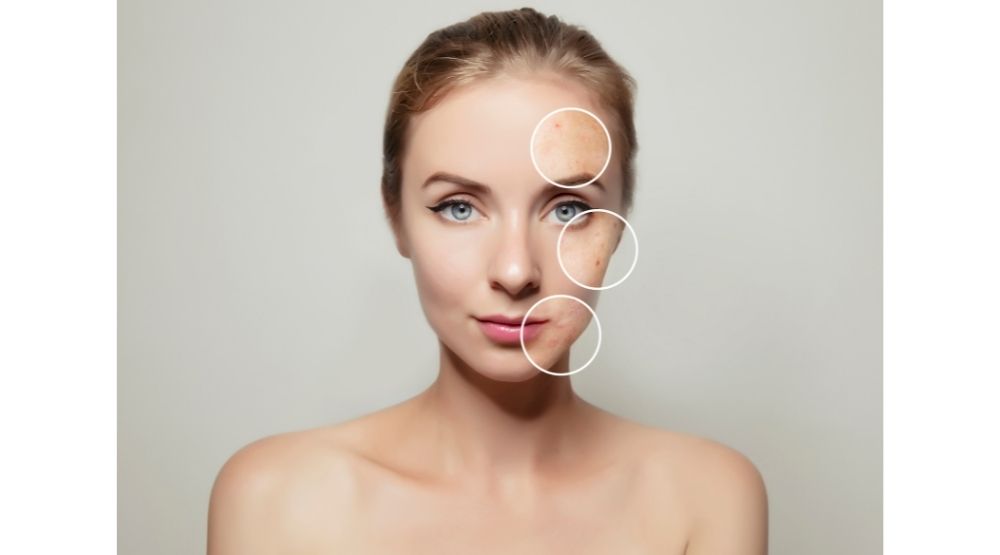While everyone loves a cheap and cheerful beauty hack, lockdowns gave rise to a number of unfortunate at-home experiments beauty practitioners wish had never happened. Now, as clients flock back to salons, there’s one dangerous trend beauty therapists need to watch out for.
Dr Vivek Eranki is CEO of multi-award-winning national Cosmetique Cosmetic Clinics. Running clinics across Queensland, South Australia, Victoria and WA, Eranki has seen an increase in clients presenting in clinics with severe complications from at-home procedures.
One of the most dangerous and shocking of these procedures has been “at home filler kits.”
He tells PB: “DIY lip filler kits can be purchased online from overseas for as little as $20. They include a syringe, filler and vague instructions on how to inject filler into your lips, sometimes in broken English.”
In some cases, outcomes have been so severe patients can require emergency health treatment. He recounts, “We had one patient who presented at Cosmetique, in a lot of pain. The tip of her nose was dusky from lack of blood supply. Based on the colour and nature of her nose skin, we surmised the patient was experiencing vascular occlusion, killing the tissue overlying the tip of her nose. We had to move very quickly and undertake emergency treatment to save her nose.”

Emergency treatment involves administering injections to dissolve and remove the filler, restoring the flow of oxygen. With myriad “at-home” treatments trending and counterfeit beauty and skincare products flooding the market, Dr. Erenki feels it’s essential that beauty professionals, from beauty therapists to cosmetic surgeons, are on alert for signs of an at-home invasive “procedures” gone wrong.
The consequences of leaving these injuries untreated can be severe: “When these substances are injected into your lips, they can cause allergic reactions and infections. They can cause the death of overlying tissue, and even blindness.”
Embolisms and vascular occlusions are also common. Dr. Eranki explains, “An embolism can occur when a piece of a blood clot, foreign object, or other bodily substance becomes stuck in a blood vessel and largely obstructs the flow of blood. Vascular occlusion happens when the filler is accidentally injected into an artery, causes blockage of circulation, and results in the death of cells.”
Other dangerous trends:
Hyaluron pens, a less invasive and more mainstream at-home filler substitute, have also become extremely popular during lockdown – these pen’s ae also filled with a hyaluronic acid solution. Dr. Eranki tells PB these solutions are often topical grade. They might be the same a consumer buys off the shelf for their face, rather than the specialist formulas used in clinics.
The pens are needless, which has led to them being described as a safe, “non-invasive” option. In fact, they are neither. “While they look like big fat plastic syringes that contain filler product, they don’t contain needles. The problem is that the product still pierces the skin by using pressurised air to force filler into the lips and folds of the skin. This can be highly dangerous.”
Hyaluron pens push hyaluronic acid into the skin using forceful, pressurised air. Unfortunately for at-home enthusiasts, this method does not take into account facial anatomy or proportions. Think of it as a blunt-axe solution with none of a needle’s precision.
It also ignores the variations in filler used by trained dermal therapists and cosmetic physicians to create optimal shape and balance. Online reviews tell stories of many days of bruising, swelling, pain, infection and ulcerations. Others report, say, months of lumpy lips. While unhappy clients at clinics can return to their treating physician when disappointed with results, these clients have no recourse.

So, what should you do if a clients attempted at home filler?
As a beauty professional, you may think any client experiencing facial blackening post-at home procedure would head to the doctors’ office. It’s pretty common for consumers to underestimate the severity of health problems. Just think of the number of people a year who misidentify cancerous lesions as “freckles.” If somethings’ wrong with a clients’ skin, they are more likely to turn to someone they regularly see and trust, like their beauty therapist.
If you think your patient may be experiencing a health complication, it’s essential to act immediately. Dr Erenki advises, “If there are any acute medical concerns, escalate to a hospital via ambulance.” That means if there is any blackening of the treated area, call an ambulance. Dr Erenki says that for the most part, however, “adverse events caused by self-administered penetrative at-home treatments are either sub-acute or chronic. In such instances, they can be treated appropriately in a clinic.” Dr Erenki says that wherever the patient underwent the initial treatment, clinics are happy to address concerns and advise on any further treatments (that will hopefully occur outside of yourclient’s living room!)
Read the current issue of our digital magazine here:
- For more news and updates, subscribe to our weekly newsletter
- Follow us on Instagram
- Like us on Facebook
- Join Australia’s largest network of beauty industry professionals on LinkedIn
- Subscribe to our print magazine
Have an idea for a story or want to see a topic covered on our site and in our pages? Get in touch at info@professionalbeauty.com.au.

